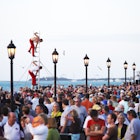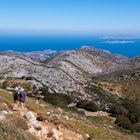
Jan 16, 2026 • 7 min read
The best museums in Florence display everything from Renaissance masterpieces to contemporary art, science collections and more.

Jan 16, 2026 • 7 min read
The best museums in Florence display everything from Renaissance masterpieces to contemporary art, science collections and more.

Jan 16, 2026 • 12 min read
Plan your travels around Japan with our top tips for solo visitors.

Jan 16, 2026 • 8 min read
Here's our rundown of the best places in Mexico to visit in the spring.

Jan 16, 2026 • 7 min read
There’s really never a bad time to visit the sunny, quirky island of Key West. Still, different seasons have their pros and cons. Here’s a full guide.

Jan 16, 2026 • 12 min read
The Greek capital offers unparalleled encounters with ancient history, backed up by vibrant, big-city culture. Here are the best things to do in Athens.

Jan 16, 2026 • 11 min read
From Japan's cherry blossoms to Bhutan's festivals, discover the best places to visit in Asia in spring.

Jan 16, 2026 • 10 min read
Salute the sun at sunrise, then surf a world-class barrel at a remote beach at sunset – it's possible at Indonesia's top destinations.

Jan 16, 2026 • 8 min read
From what to pack to how to engage with locals to how to protect yourself from the sun, here’s what you need to know before your next trip to Sydney.

Jan 15, 2026 • 9 min read
Japanese society is tethered to cultural and religious traditions in a way that unites past, present and future and shapes daily life.

Jan 15, 2026 • 7 min read
During the spectacular tulip season, the Dutch national flower splashes color throughout Amsterdam and around the countryside. See it all with this guide.

Jan 15, 2026 • 10 min read
Central Park is where New Yorkers go to get a breath of fresh air and recharge. Here's a handy guide to exploring it.

Jan 15, 2026 • 5 min read
Pick which Sri Lankan coast to visit and stretch out on these idyllic sands.

Jan 15, 2026 • 7 min read
Here’s everything you need to know before traveling to Kenya, from tips on visas, culture, safari guidance and packing advice.

Jan 15, 2026 • 14 min read
Check out these options and create the 1-week, 2-week or 3-week vacation of your dreams.

Jan 15, 2026 • 6 min read
Visiting Muslim countries during the holy month of Ramadan can be an enriching and interesting experience for non-Muslim tourists. Here’s what to know.

Jan 15, 2026 • 8 min read
Learn how the Amtrak USA Rail Pass works, what it costs, the rules, top scenic routes and smart tips to plan a cross-country train trip.

Jan 15, 2026 • 10 min read
Distinct in character (and climate) from Sydney and Melbourne, Brisbane has an underdog energy of its own.

Jan 15, 2026 • 6 min read
Spring in Paris brings sunshine, flowers in bloom and special events. Here are the city's best experiences in March, April and May.

Jan 15, 2026 • 11 min read
The best hikes in Greece offer something for every kind of walker. Try these classic hiking trails, from Crete to the Peloponnese.

Jan 15, 2026 • 8 min read
With ancient temples, exciting wildlife and rich culture, Assam is one of India's most beautiful frontiers. Here's what first-time visitors need to know.

Jan 14, 2026 • 7 min read
Discover the best time to visit Italy with our guide to seasonal tips on weather, crowds, prices and events.

Jan 14, 2026 • 7 min read
Australia is so vast and varied that the best time to visit depends on what you want to do. Here's how to choose the perfect time for your trip.